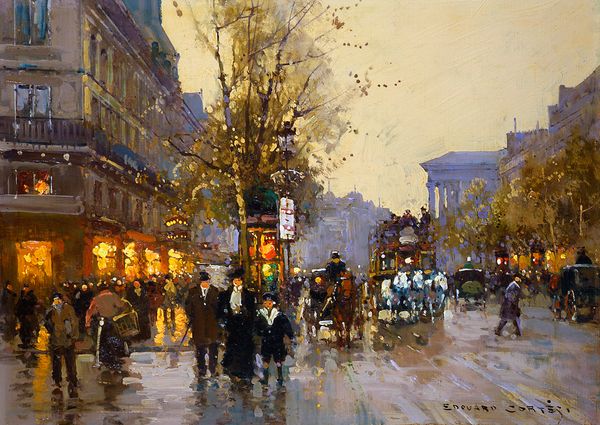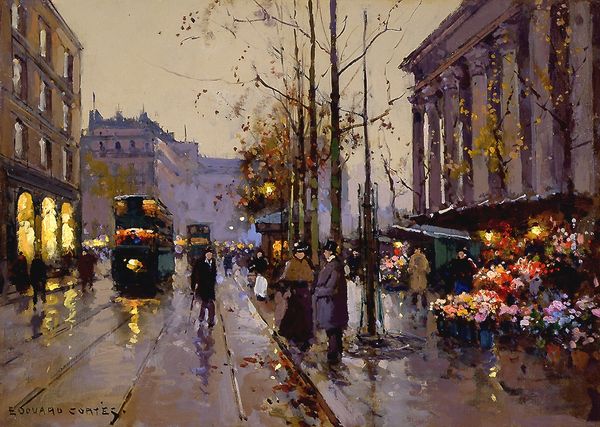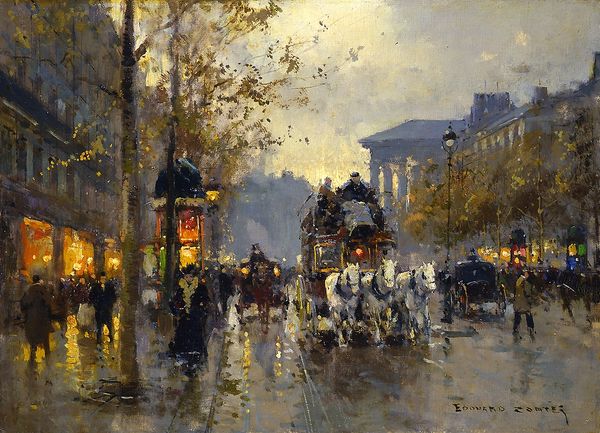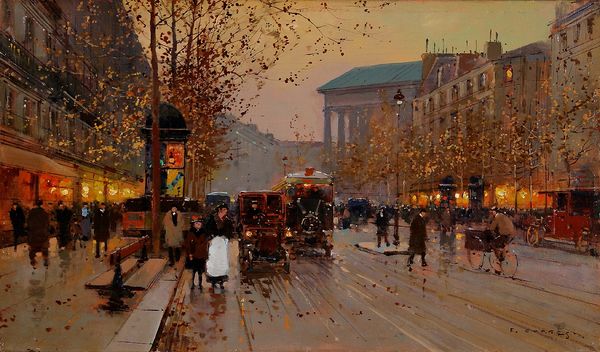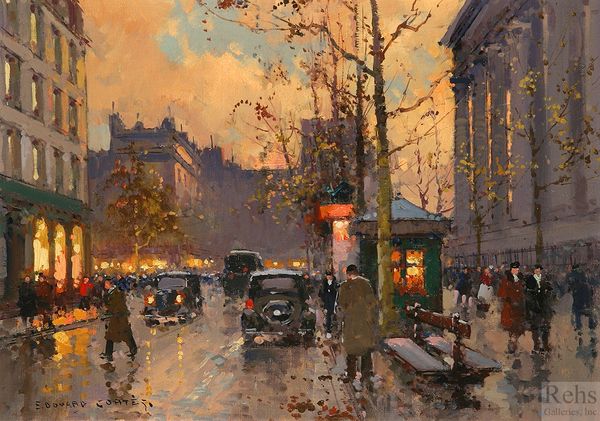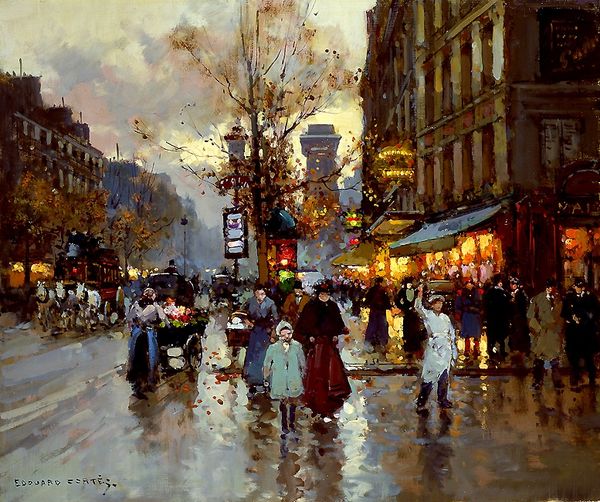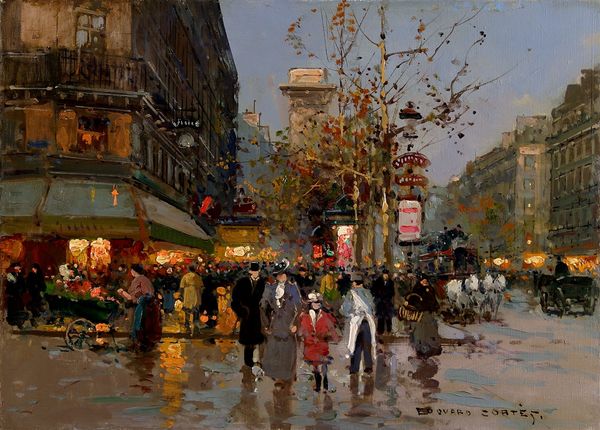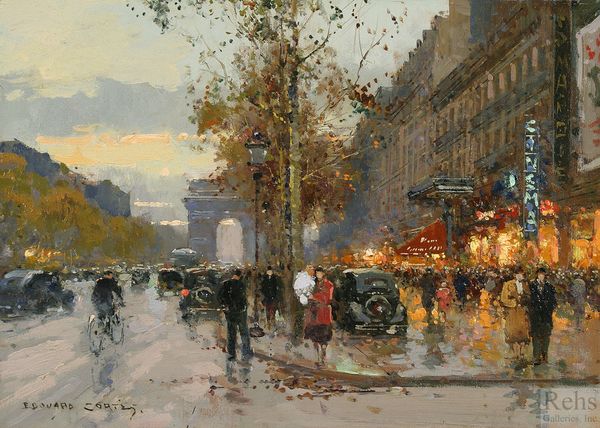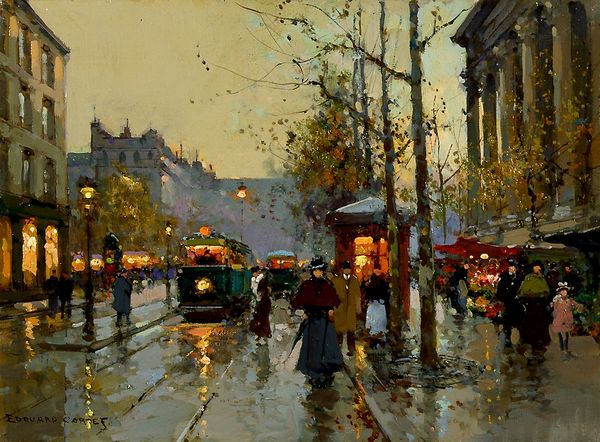
painting, oil-paint
#
flâneur
#
cityscape
#
painting
#
impressionism
#
oil-paint
#
landscape
#
oil painting
#
romanticism
#
cityscape
Copyright: Edouard Cortes,Fair Use
Editor: So, this oil painting is "Boulevard de la Madeleine," by Edouard Cortes. I love how it captures a rainy day in Paris. It feels like a specific, fleeting moment. What symbolic elements jump out to you? Curator: The gas lamps are interesting; consider them in the twilight. Light—artificial and natural—is a potent symbol. It represents knowledge, progress, and even hope in the face of urban transformation. But the haze around the lamps and the reflections on the wet pavement also create a sense of ambiguity. What is being illuminated and what remains hidden? Editor: That's a good point; it's not all clear. The figures are less distinct and more shadowy; why might the artist represent the figures in this way? Curator: The figures in motion become archetypes of city dwellers – flâneurs observing or rushing somewhere – rather than specific individuals. This suggests themes of anonymity, alienation, and the ephemeral nature of modern life. Cortes seems fascinated with types, not specific citizens, placing them inside an old-meets-new Paris: horse carriages versus the promise of electrical light and architecture. Editor: It almost feels like nostalgia in the making, doesn't it? He's painting a Paris that was already disappearing. Curator: Indeed. There is tension and romantic longing for an older Paris. Think of the historical connotations linked to carriages, architecture, and clothing: These visuals operate on the unconscious. Are we meant to mourn that loss? Editor: I hadn’t thought about that; the figures representing this sense of anachronism certainly evokes nostalgia. Thanks; I see much more now! Curator: And I realize how Cortes uses seemingly simple street scenes to tap into powerful currents of cultural memory.
Comments
No comments
Be the first to comment and join the conversation on the ultimate creative platform.
